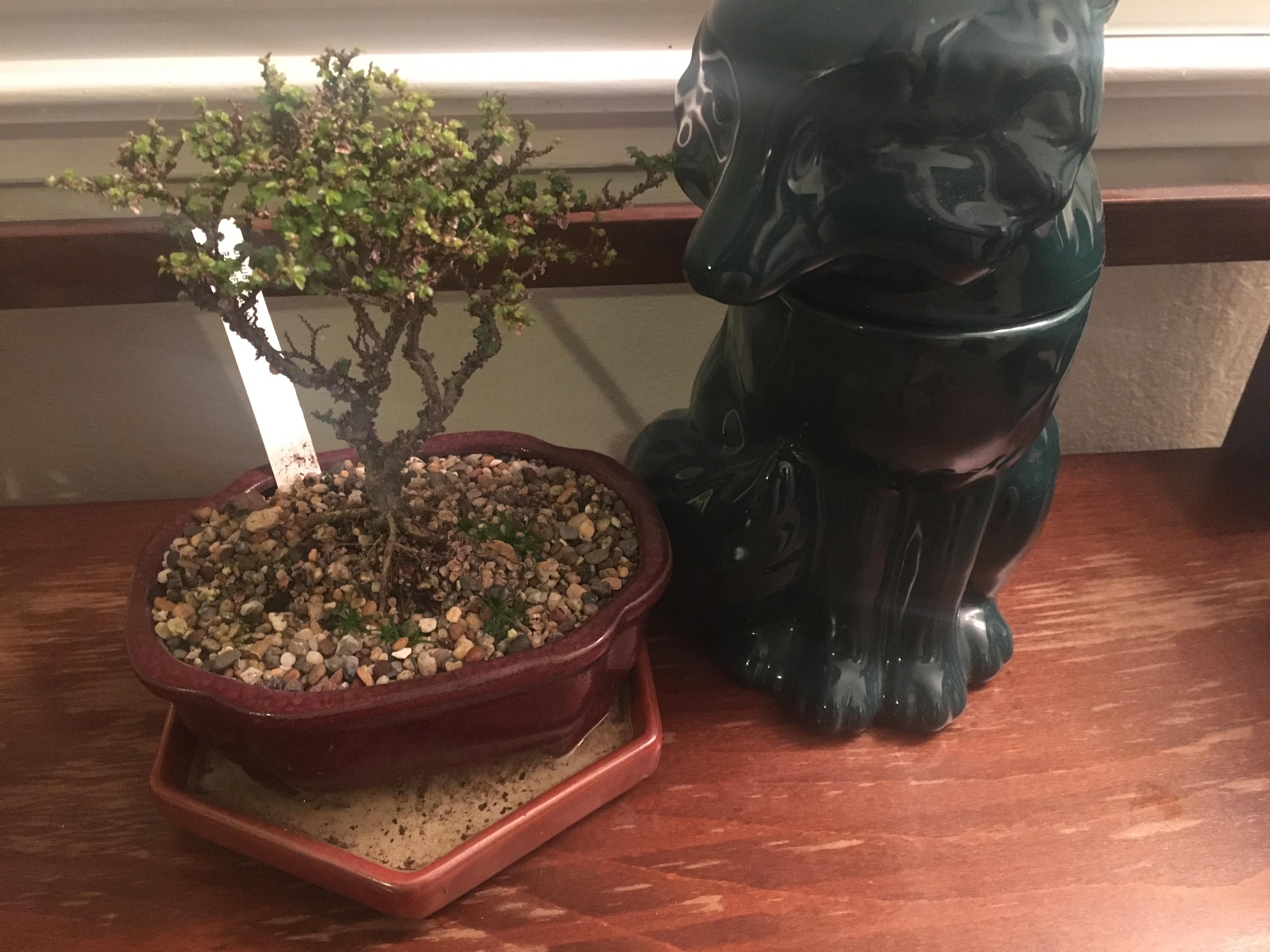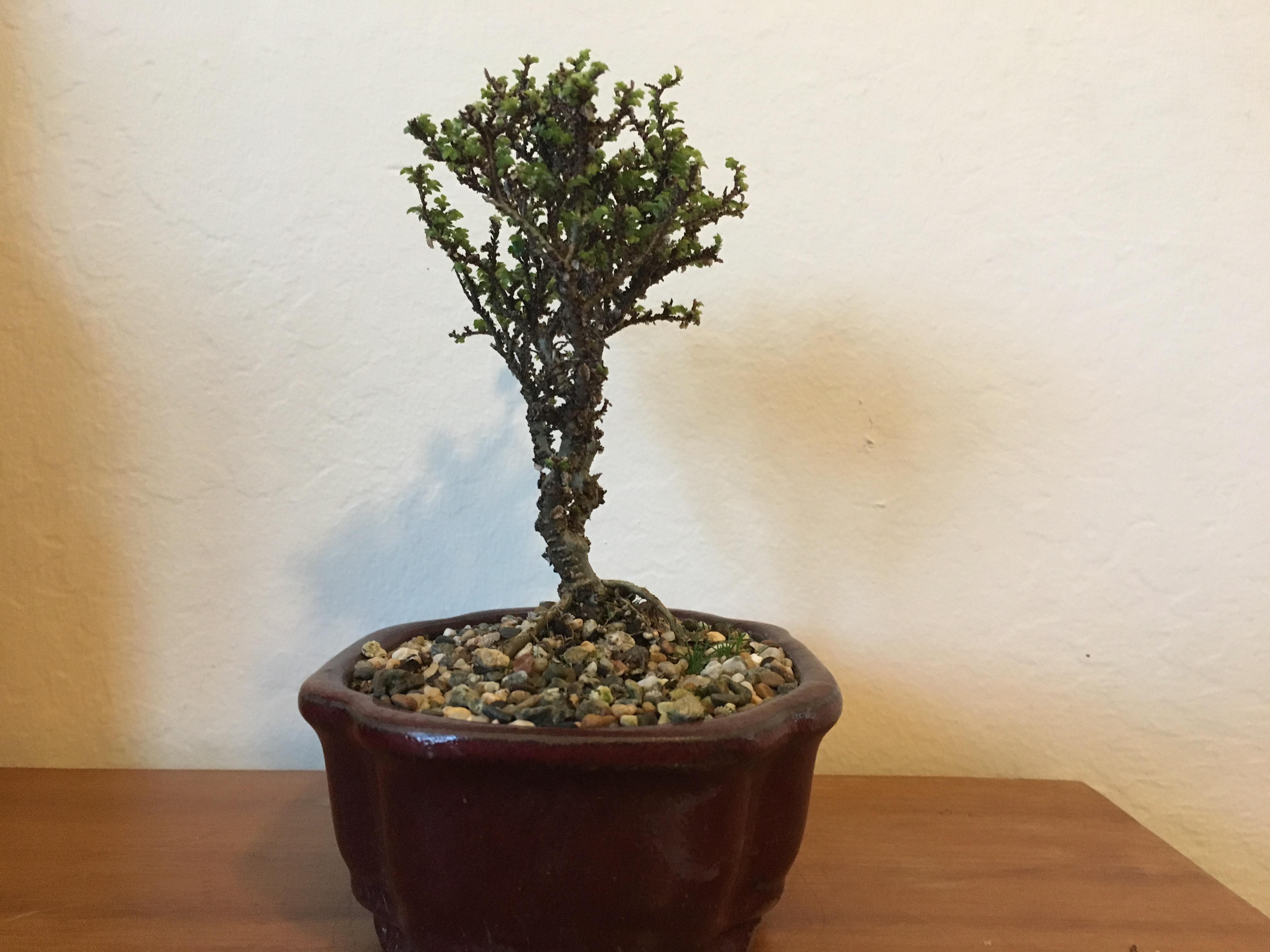Welcome to crazy. Yep, 'Hokkaido' cultivar of Chinese elm is ''the most difficult'' of the Chinese elms to keep happy. But it can be done. It can be done under lights.
An interesting factoid, we all got hooked on bonsai by the exquisite photos of traditional Japanese Tokonoma displays, a tree, a scroll and an accent plant or stone or something. Exquisite. Many westerners don't realize, those trees are brought into the house and set in the display only an hour or so before guests arrive, and are placed back outside shortly after the guests leave. In Japan a tree is seldom indoors for more than 24 hours.
Since you have a back yard, you could raise a small collection of trees, and rotate them through the seasons, each to spend some time on your desk, then back outside for more rapid, better growth. A collection of 52 trees would let each tree have a week indoors, and be able to be outdoors for the rest of the growing season. Just tossing the idea out. You could then pick up trees with special interest at different times of the year. For example, flowering quince for late winter bloom, azalea for April-May bloom, Wisteria for May-June or when ever it blooms in your area. Pines, elms and other deciduous for times when you don't have something in bloom. A maple or other tree with good autumn color.
Indoor bonsai, hang out some at the indoor grower supply shops, get a feel for different set ups. Most trees that will tolerate indoor growing are species that will be somewhat shade tolerant. If you can achieve half to 3/4ths the light intensity recommended for marijuana, you will have ''good enough'' light to do indoor bonsai. To some extent longer day length will compensate for lower light intensity. I run my lights 18 hours a day. Plants, trees etc, do need a ''dark cycle'', a study out of UW-Madison showed over 18 hours a day you are wasting electricity. I shoot for 1000 to 1400 foot candles of light, I think that is roughly 10,000 lumens to 14,000 lumens. This is about 25% full sun, but with the long day length I can bloom high light requiring orchids. (and the trees do well too). I like your LED grow light set up, but you will have to decide if it is intense enough.
Genus Ficus, the figs, especially the tropical figs are very good year round under lights candidates.
Chinese elm - is a subtropical elm, and somewhat shade tolerant, it does well in a very bright light garden, fades away if it is not intense enough light, but has been successfully raised under lights full time by a few growers. This is true of all the chinese elm cultivars.
Eugenia, Jaboticaba, Psidium - most members of the guava family, many of these do well under lights, Eugenia has the smallest leaves, and Jaboticaba is a close second. They will flower and if pollinated, fruit under lights. The culinary guava has large leaves that only reduce to the point where they are best for 3 to 4 foot tall bonsai.
Procumbens juniper is the only juniper that is somewhat shade tolerant, and I have heard of some limping a Shimpaku juniper along under lights. Both will give better, tighter growth outdoors. Other junipers need more sun, AND need cold winter dormancy.
Pines - vast majority are totally shade intolerant - even under my moderately high tech light system I can not keep a JBP healthy under lights. Ended up having to remove all under lights growth and start over as it was too weak and leggy. Best as ''visitors'' to the indoors, rotate them outside after a week indoors.
Azalea - especially the ''florists azalea'' bred for the flowering decorative potted plant trade, these hybrids have R. simsii and other tropical azalea species in their complex backgrounds. These do well under lights and can be a totally indoor tree if light is good. Satsuki azalea need a mild chill period to set flower buds. It is not an extreme chill, likely very doable in Sonoma county.
There are many, many more candidates, but I think you see the pattern. For 100% indoors, they need to be tropical or subtropical, and need to be shade tolerant, listed as half sun to full shade as a landscape plant. Species with small leaves work better too.









